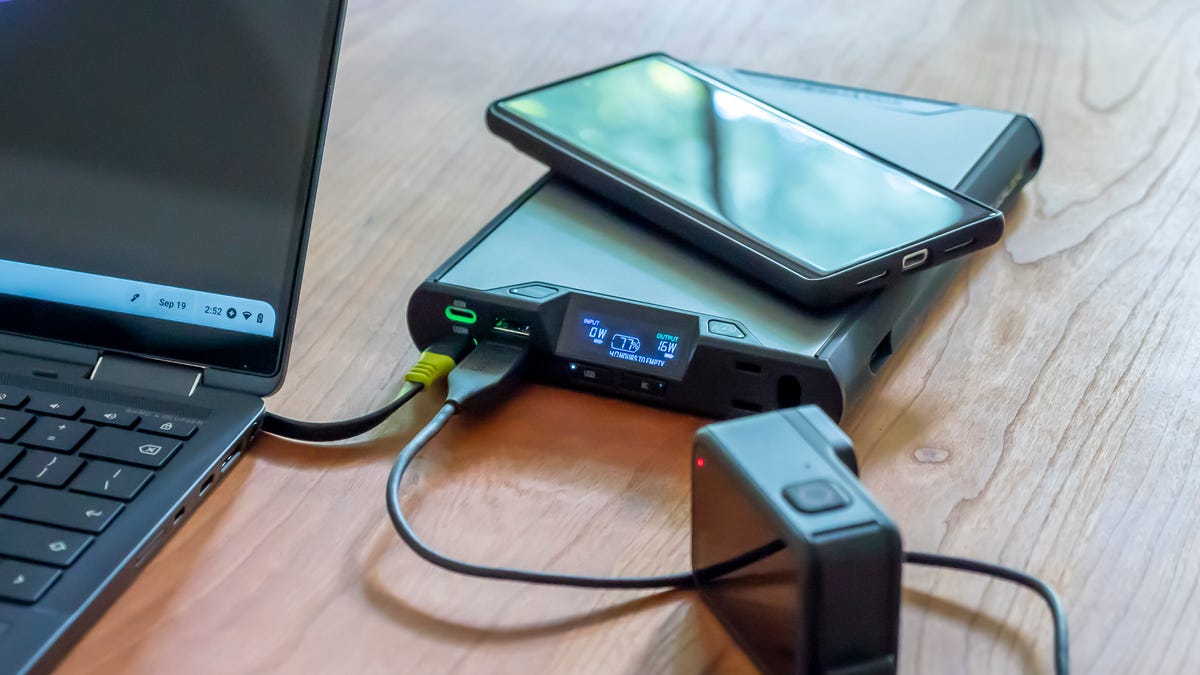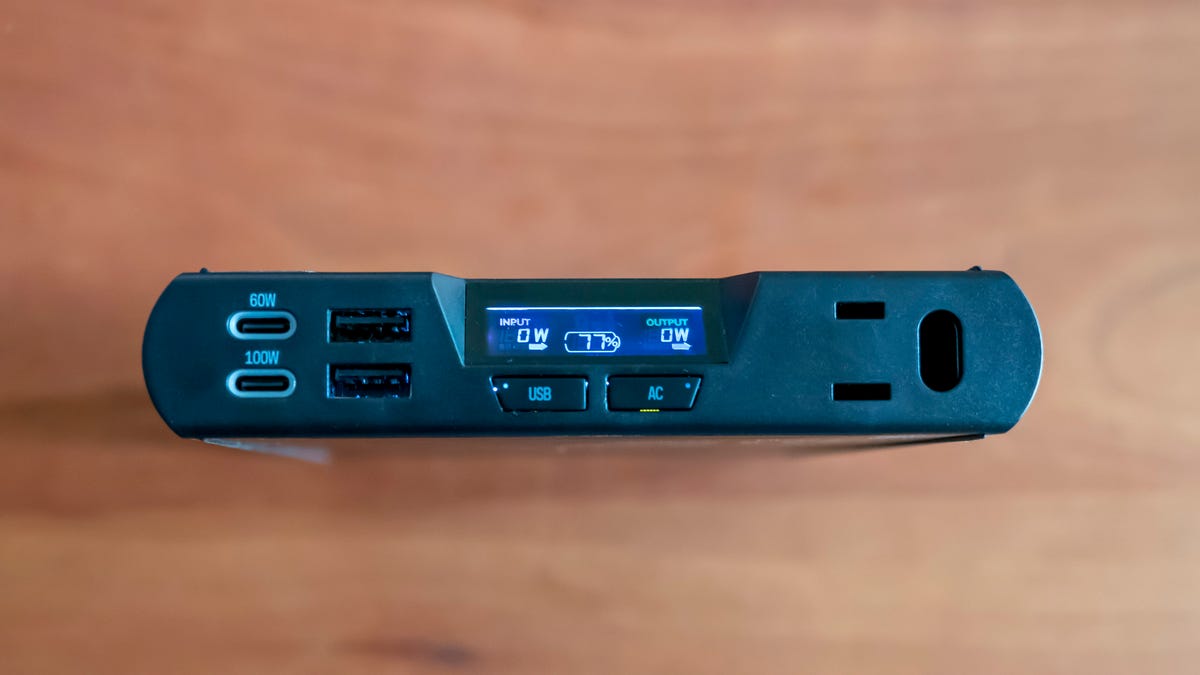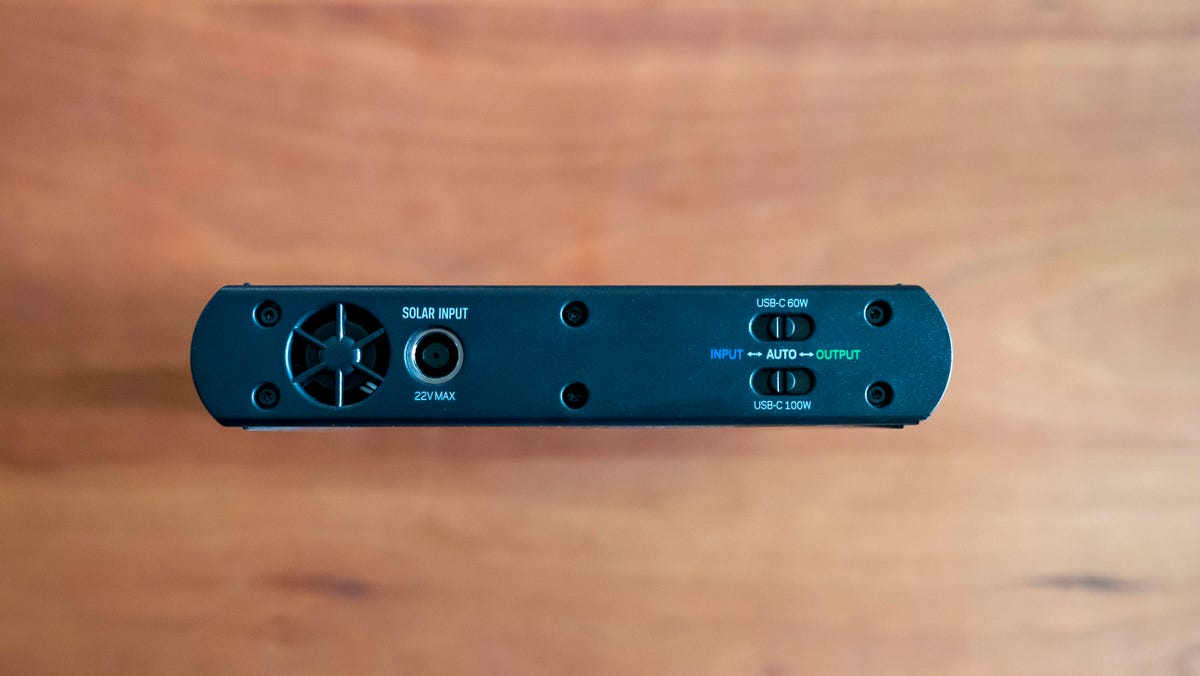Goal Zero Sherpa 100 Power Banks Can Charge a Laptop With a 100-Watt USB-C Port

The fourth-gen Sherpa 100 is available with or without an AC output.
Josh Goldman/CNET
For laptop users, the move away from power adapters with barrel connectors to universal USB-C ports has been a game changer for charging on the go. Not only does it make it easier to use a single power supply for multiple devices, but it means the right power bank can also charge your laptop when there’s no outlet in sight. Goal Zero’s Sherpa 100 line is the right power bank, especially with the updates it’s made to its fourth-gen models.
There are two models: the Sherpa 100PD and Sherpa 100AC. The $200 100PD (£175, AU$300 converted) has a single 100-watt USB-C output (5-20 volts, up to 5 amps) and two, 12-watt USB-A outputs (5V, up to 2.4A). The 100AC ($300) adds a second USB-C port with 60-watt output (5-20V, up to 3A) and a 110-volt AC inverter capable of up to 100-watt output (up to 0.9A). Each bank has a 94.7Wh battery, the largest capacity allowable for travel on any airline.

If you need to plug in an AC adapter to power or charge a device, you’ll want to spend $100 extra for the Sherpa 100AC.?
Josh Goldman/CNET
Both models can wirelessly charge devices like phones or wireless earbuds through the pad on top of the bank. Output has been increased to 15 watts, up from 5 watts in the last version. Put a device down on the pad, press a button on the bank, and it starts charging.?
To charge the Sherpa 100s, the USB-C port supports input of up to 60 watts (5-20V, up to 3A). It took approximately 2.5 hours to fully charge the bank from empty using the included 39-inch USB-C-to-USB-C cable and Goal Zero’s 65-watt USB-C GaN charger. Each model has a new color LCD display to show how much power is left in the bank, how many watts are coming in and going out, and a percentage of how much power is left in the bank as well as an estimate on how long it’ll last with the current output.?

A Goal Zero Nomad solar panel can be connected to the Sherpa 100AC to recharge the power bank.
Josh Goldman/CNET
The new Goal Zero Sherpa 100 power bank’s rear panel has physical switches to change power modes from input or output for the USB-C ports or you can set it to Auto and the Sherpa 100 will switch automatically between the two. The Sherpa 100AC also has a charging port to connect a Goal Zero Nomad 50 solar panel to the pack to fill the power bank away from an outlet. The 100PD can be used with the Nomad 20 panel via USB.
The power banks do get a little warm to the touch when charging but nothing alarming, and I wouldn’t think twice about keeping it in my backpack while charging a phone or tablet. The heavy-duty aluminum housing seems like it’ll handle some rough treatment, and there are rubber bumpers down the sides that should help with drop protection and gripping them if your hands are cold or a little wet. (They’re covered with a two-year warranty too.)?
The biggest drawback for most people, aside from price, will likely be weight. The smaller Sherpa 100PD is 1.5 pounds (680 grams), while the 100AC is 2 pounds (907 grams). That’s not bad if you’re just walking from your car to the airport and to the hotel. But if you’re keeping it in a pack on your back or shoulder, it might be just a bit too much extra weight. Otherwise, it’s an indispensable travel companion.